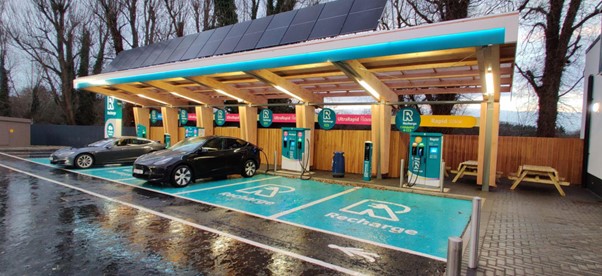
Northern Ireland EV Infrastructure Energy Needs and Analysis
Case Study
The Challenge
The Department for the Economy in Northern Ireland tasked Cenex with a vital inquiry: assess existing fuel retailers and HGV depots, potential hubs for future Electric Vehicle (EV) charging infrastructure and juxtapose anticipated demand with current grid capacity. This exploration aimed to meet the increasing energy demands posed by the growth of EVs and the potential uptake of hydrogen and LNG in the region.
The Development
Cenex worked with the Centre for Advanced Sustainable Energy at Queens University Belfast to research two different elements of the transport decarbonisation challenge in Northern Ireland i.e., mapping existing locations of fuel retailers and HGV depots as well as comparing potential needs against grid capacity. Moreover, Cenex conducted meticulous data collection encompassing fuel retailer locations, HGV licensing, public stops, and grid capacity data.
Leveraging their in-house EV uptake models, they projected vehicle adoption scenarios and calculated the energy demand required to serve a low and zero-emission vehicle fleet. The findings were translated into mapping using Cenex’s GIS expertise, accurately illustrating energy hotspots at HGV and fuel station locations in relation to electricity grid capacity.
The Result
The analysis indicated a rapid surge in EV adoption from 2025 onwards, with diverse charging infrastructure needs emerging. Even in a conservative uptake scenario, zero-emission HGVs were anticipated to constitute a significant portion of the fleet.
By 2030, the ZE HGV fleet would require a substantial number of rapid and ultra-rapid chargers. Hydrogen refuelling stations were also projected to become vital for the hydrogen-fuelled segment of the fleet.
The mapping of fuelling station locations and the existing supply network demonstrated sufficient headroom for expansion yet identified a potential need for future upgrades. Similarly, mapping HGV overnight parking locations indicated opportunities for electrical supply enhancements to accommodate evolving charging infrastructure requirements.

